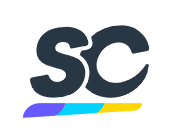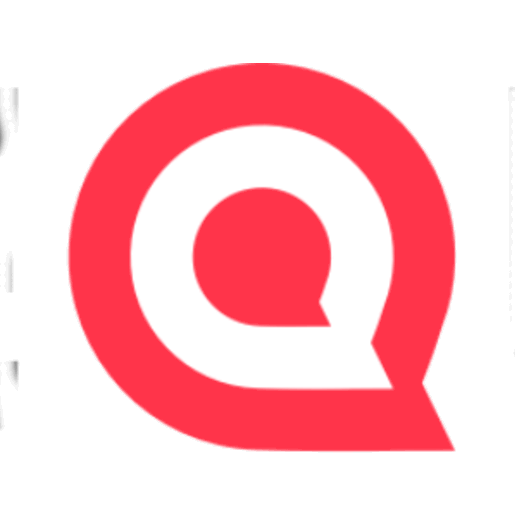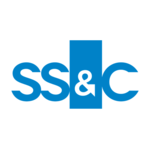Description

SafetyCulture

SeaMind
Comprehensive Overview: SafetyCulture vs SeaMind
SafetyCulture and SeaMind are two companies operating within the realm of workplace safety, inspection, and risk management solutions. Here’s a breakdown of each, focusing on their primary functions, target markets, market position, and differentiating factors:
a) Primary Functions and Target Markets
SafetyCulture:
- Primary Functions: SafetyCulture is primarily known for its flagship product, iAuditor. iAuditor is a digital inspection platform that allows businesses to create checklists, conduct inspections, and generate reports to manage safety and quality across various industries. The platform supports audits, incident reports, and predictive analytics, enabling organizations to maintain safety and compliance standards efficiently.
- Target Markets: Its target markets include industries such as construction, manufacturing, hospitality, retail, and healthcare—essentially any field that requires rigorous safety and compliance checks.
SeaMind:
- Primary Functions: SeaMind specializes in offering AI-driven analytics and decision support systems. Its solutions focus on risk management and enhancing safety protocols through advanced data analytics. The company leverages artificial intelligence to optimize operational workflows, improve safety measures, and reduce risks in complex work environments.
- Target Markets: SeaMind targets sectors that involve high-risk operations or require sophisticated data analytics for safety and operational insights, such as maritime, oil and gas, and energy sectors.
b) Market Share and User Base
-
SafetyCulture: SafetyCulture has established itself as a leader in the safety and inspection software market, particularly with iAuditor. It boasts a substantial user base, with millions of inspections conducted monthly by organizations across different sectors worldwide. Its user demographic is broad due to the versatile applicability of inspection checklists in numerous fields.
-
SeaMind: As SeaMind focuses on niche markets with specialized AI solutions, it has a smaller yet targeted user base compared to SafetyCulture. It is gradually expanding its market presence by offering tailored AI-driven analytics solutions that cater to specific industry needs.
c) Key Differentiating Factors
-
Technological Approach:
- SafetyCulture primarily offers a user-friendly platform that facilitates manual and semi-automated inspections and reporting. While its focus is on streamlining inspection workflows, it incorporates basic AI for analytics and forecasting.
- SeaMind is heavily reliant on cutting-edge AI and machine learning technologies to deliver advanced analytical insights and decision support. Its offerings are centered on leveraging AI to predict, prevent, and manage risks effectively.
-
Industry Focus:
- SafetyCulture serves a broad range of industries with generalized inspection tools that can be customized for various applications.
- SeaMind, conversely, zeroes in on industries with high-risk factors and complex operational environments, providing sophisticated risk management solutions tailored to those settings.
-
User Experience:
- SafetyCulture is recognized for its intuitive interface and ease of use, designed for quick deployment in any organization with minimal training.
- SeaMind solutions might require more training and integration due to their complexity, but they offer deeper insights and capabilities for experienced users.
In summary, while SafetyCulture and SeaMind both operate in the safety and risk management domain, they cater to different segments and needs within that domain. SafetyCulture, with its broad appeal and user-friendly tools, holds a larger market share, while SeaMind, with its advanced AI focus, addresses niche, complex environments requiring specialized solutions.
Contact Info

Year founded :
2004
+1 816-787-1343
Not Available
Australia
Not Available

Year founded :
Not Available
Not Available
Not Available
Not Available
http://www.linkedin.com/company/seanind-pte-ltd
Feature Similarity Breakdown: SafetyCulture, SeaMind
To provide a detailed feature similarity breakdown between SafetyCulture and SeaMind, I'll outline what I know based on available information related to products like SafetyCulture. However, please note that product details can evolve, and my information may not cover the latest updates.
a) Core Features in Common:
-
Inspection and Audit Management:
- Both platforms facilitate the creation, management, and execution of inspections and audits, allowing users to ensure compliance and maintain safety standards.
-
Form and Checklist Customization:
- Both offer customizable forms and checklists to cater to different industries and organizational needs. Users can adapt templates to suit specific requirements.
-
Data Capture and Reporting:
- They provide tools for capturing data during inspections, with capabilities for generating reports and analytics to gain insights into safety and compliance metrics.
-
Cloud-Based Access:
- Both platforms are cloud-based, enabling real-time access to data and reports from anywhere.
-
Mobile Compatibility:
- Both products support mobile devices, allowing users to conduct inspections and manage tasks on the go.
-
Collaboration Tools:
- Features that promote collaboration among team members, such as shared access to documents and communication channels, are common.
b) User Interface Comparison:
-
Design and Usability:
- While both platforms aim for ease of use, SafetyCulture might be known for its streamlined and user-friendly interface, often praised for simplicity and intuitive navigation. SeaMind's UI might vary depending on its focus, potentially prioritizing features that are specific to its industry solutions.
-
Customization and Flexibility:
- Both interfaces offer customization, but the level of flexibility can differ. SafetyCulture tends to provide user-friendly, drag-and-drop customization options, which might be similarly available in SeaMind depending on its target user base.
-
Visual Appeal:
- SafetyCulture generally keeps its interface clean and modern, which might appeal visually, while SeaMind's visual strategy might be more functional or tailored for specific industries.
c) Unique Features:
-
SafetyCulture Unique Features:
- Integration with Sensors: Offers integrations with IoT devices and sensors for real-time data collection and monitoring.
- Learning Management System (LMS): Tools to create and manage employee training for safety and compliance directly within the platform.
-
SeaMind Unique Features:
- Depending on the precise domain and industry SeaMind targets, it might offer unique features tailored for specific sectors (such as maritime, engineering, or others), which could include industry-specific compliance modules or niche analytics suited for specialized fields.
Conclusion:
While SafetyCulture and SeaMind might share several core features, each may offer unique features that target different user needs or industries. SafetyCulture emphasizes broad usability and integration capabilities, while SeaMind might specialize in industry-specific solutions. Always consider checking the latest product updates and comparing trial versions or demos to make an informed decision.
Features

Inspection Management
Team Collaboration
Safety & Compliance
Mobile Accessibility
Analytics & Insights

User-Friendly Interface
Collaboration Tools
Analytics and Reporting
Data Management
Best Fit Use Cases: SafetyCulture, SeaMind
SafetyCulture
a) Best Fit Use Cases for SafetyCulture:
-
Industries:
- Construction and Manufacturing: SafetyCulture is widely used in industries where safety inspections, audits, and real-time reporting are critical. Its mobile-first platform is ideal for field operations in construction and manufacturing sectors where compliance and safety checks are frequent.
- Hospitality and Retail: Businesses in these sectors can benefit from SafetyCulture’s ability to streamline operational checklists and ensure consistent service quality and safety compliance.
- Healthcare: For organizations that need regular audits and safety inspections to maintain high standards of health and safety for both patients and staff.
-
Business Types:
- Large Enterprises and SMEs: Both large enterprises and small to medium-sized enterprises (SMEs) that need scalable solutions for safety management and compliance monitoring.
- Multi-site Operations: Companies with geographically dispersed sites that require a centralized platform to manage and monitor safety and quality processes.
-
Projects:
- Project Management and Compliance Audits: Projects that require dynamic risk assessments and instant reporting for compliance purposes.
SeaMind
b) Preferred Scenarios for SeaMind:
-
Industries:
- IT Services and Tech Companies: SeaMind, with its focus on AI and analytics, is well-suited for tech-driven industries that require real-time data integration and analytics for decision-making.
- Financial Services: Organizations within banking and finance can leverage SeaMind for risk assessment and management through advanced data analytics.
-
Business Types:
- Data-Driven Enterprises: Companies that heavily rely on data for operational decisions and demand advanced analytics capabilities.
- Startups and Innovation Hubs: Organizations that focus on research and development, requiring robust analytics platforms for innovative solutions.
-
Projects:
- Data Analytics and Machine Learning Projects: Projects centered around artificial intelligence, predictive analytics, and data-driven strategy formulation can benefit from SeaMind’s capabilities.
Catering to Different Industry Verticals or Company Sizes
SafetyCulture:
- Industry Vertical Adaptation: SafetyCulture’s platform is customizable and adaptable to various industry needs, providing pre-built templates and checklists that can be tailored for specific industry requirements.
- Scalability: The platform is scalable, making it suitable for both small scale operations and large multi-national corporations, allowing businesses of all sizes to improve safety and quality processes.
SeaMind:
- Industry Adaptability: SeaMind employs advanced analytics and AI to provide insights tailored to specific industry needs, making it fitting for sectors where data utilization is significant.
- Company Size Flexibility: The product’s flexibility in handling vast data through AI enables it to serve both small startups looking to leverage AI for innovation and large enterprises focusing on extensive data analytics for competitive advantage.
Both SafetyCulture and SeaMind cater to different aspects of operational excellence—SafetyCulture focuses on safety and compliance, while SeaMind emphasizes data analytics and machine learning, allowing them to fit effectively into various industry verticals and company sizes.
Pricing

Pricing Not Available

Pricing Not Available
Metrics History
Metrics History
Comparing undefined across companies
Conclusion & Final Verdict: SafetyCulture vs SeaMind
To provide a comprehensive conclusion and final verdict for SafetyCulture and SeaMind, let's evaluate each product based on multiple factors, including features, pricing, usability, support, and specific use cases.
a) Considering all factors, which product offers the best overall value?
SafetyCulture (iAuditor) is generally considered to offer the best overall value for organizations primarily focused on improving workplace safety and operational efficiency. It provides a robust platform for conducting inspections, audits, and improving compliance with safety standards. The integration capabilities and mobile-friendly design make it appealing for teams in industries like construction, healthcare, hospitality, and manufacturing.
b) Pros and Cons of Choosing Each Product
SafetyCulture (iAuditor):
Pros:
- User-Friendly Interface: Known for its ease of use, allowing teams to quickly create and conduct digital inspections.
- Comprehensive Features: Offers a wide range of tools for inspections, audits, and reporting, which are crucial for safety management and maintaining compliance.
- Mobile Access: Strong mobile platform support, which is ideal for on-the-go audits and inspections.
- Integration Capabilities: Can integrate with other business applications, enhancing its utility as part of a broader operational tech stack.
- Active Community and Support: A vibrant user community with extensive resources and customer support.
Cons:
- Learning Curve for Advanced Features: While basic functionalities are easy to learn, mastering advanced features might require additional training.
- Cost: Depending on the size of the organization and the number of features needed, it can become costly.
SeaMind:
Pros:
- Specialized Features: Typically shines in niche or sector-specific applications, offering specialized features that may be more aligned with certain industry needs.
- Customizability: Allows for more tailored solutions for unique workflows and processes particular to certain industries.
- Data Analysis and Reporting: Strong emphasis on data analysis, making it useful for organizations that prioritize data-driven insights.
Cons:
- Usability: May not be as user-friendly as other platforms for users who require quick setup and easy navigation.
- Limited Market Presence: Might not have the widespread adoption or support resources available compared to more popular solutions like SafetyCulture.
- Integration Challenges: Possible integration limitations with some third-party applications, which can be a con for businesses needing interconnected systems.
c) Specific Recommendations for Users Deciding Between SafetyCulture vs. SeaMind
-
Industry Needs: Assess your industry requirements. If your organization belongs to a sector where SeaMind’s specific features align well, it might be the better option. For more generalized safety and operational efficiency, SafetyCulture could be more suitable.
-
Scale of Use: Consider the scale of your operations. SafetyCulture’s widespread applicability and ease of use can greatly benefit larger organizations or those with distributed teams.
-
Budget Considerations: Evaluate budget constraints. SafetyCulture, while potentially more expensive for enterprise use, may offer a better value proposition with its comprehensive feature set and support capabilities.
-
Integration Needs: Analyze your current tech ecosystem. If integration with existing tools is crucial, look into which platform offers better compatibility with your existing software solutions.
-
Trial Periods: Taking advantage of trial periods or demos can provide insights into which platform feels more intuitive and better meets your needs.
Ultimately, SafetyCulture tends to be the more versatile solution for organizations focused on safety and operational audits, whereas SeaMind could potentially be better for those needing specific features tailored to particular industry needs. Carefully evaluate your organizational requirements, budget, and future scalability when making your decision.
Add to compare
Add similar companies



